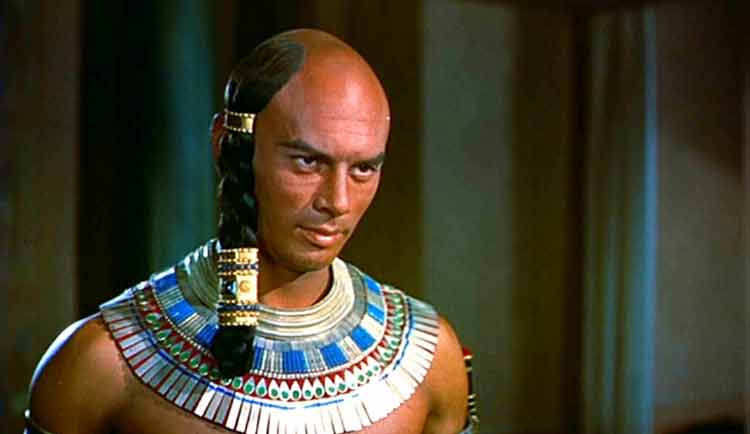With hairstyling, like in so many areas of fashion, men tend to be overlooked. Beyond references to a short back and sides, comb-overs, Beatles mops and bowl cuts, men’s hairstyles tend to be something of an afterthought. But looking through history that really isn’t the case; men have been setting the hair styling trend for millennia…
Earliest Recorded Evidence of Hairstyling
It is true that the earliest recorded evidence of hairstyling, dating from the Palaeolithic era, shows it as being the province of women. The Woman of Willendorf can be seen wearing her hair in a braided style. But quickly we move on and see that fashion and hair style became markers of class. In the Vedic age, your social status denoted how you could wear your hair. While women of a higher caste were permitted to adorn their hair with jewels, the fashion for men was to shave their head completely, apart from a thick strand at the back or side. The trend for head shaving continued among the Ancient Egyptians, although once the head was shaved, it was then covered with a wig and a false beard, made either from real hair or wool.

There were two schools of thought in the classical world. During the Ancient Greek times, the trend was to go natural. Men wore their hair in long and flowing locks, often with a natural curl and accompanied by a beard. By comparison, the Ancient Romans were far more about fashion and artifice. In one of the earliest examples of the masses following fashion fads set by celebrities, men tended to follow the trends of the Emperor. All sorts of styles were seen during the Roman Empire, including curls, sideburns, short beards and wigs. Wearing your hair in a natural style was thought to be somewhat uncouth and demonstrated a lack of culture.
During the mediaeval era, for men it was about simplicity. Beards and moustaches had been banned by Pope Gregory VII, and the trend was for male hair to be in a simple pageboy style – what we might now think of as a ‘bob’ (for women, it was forbidden to cut it, it was braided and hidden under a veil or hood). As the influence of the Catholic church lessened during the Renaissance, men again had beards and moustaches, and hair was longer, generally around shoulder length.

Wigs & Wax
Flamboyant was a keyword during the reign of Elizabeth I, with wigs and beards being extremely popular. These were doused in oils and then moulded into all sorts of weird and wonderful arrangements, held in place with starch – something of a precursor to sprays and gel! Meanwhile, during the Qing dynasty in China, men scraped their hair back and tightly braided it, with the forehead being shaved. The trend for wigs continued in the Georgian period, with elaborate, powdered affairs.

By the time we reach the buttoned up, stiff Victorians, this part of their culture was reflected in men’s hairstyles. Grooming was important, with hair, beards and moustaches neatly shaped and then finished with waxes and oils. Practicality took over with the arrival of the First World War, where men were clean shaven and uniformed. Hair was kept short and slicked back out of the way.

Razor Blades
Following the end of World War I, the invention of the safety razor brought about a revolution and continued the trend for the clean shaven look. The ease of having a safety razor at home meant that daily shaving was far less of an ordeal than it had been, and men continued to largely shun facial hair, particularly the younger generation. The shadow of war loomed again, and trends saw a return to the military bristle as those serving in the armed forces were forced to have short hair under military regulations.

Longer Hair
Freed from the military demands, and the austerity of postwar life, the sixties saw something of a revolution in self expression and following celebrity trends. With longer hair a possibility again, the Beatles were a popular inspiration for men, along with Johnny Cash and Elvis Presley, with their sex, drugs and rock ‘n’ roll lifestyle. Self expression continued into the 70s and led a return to flamboyant styling as the punk era took hold and the brightly coloured Mohawk took its place among famous hairstyles of history. And hair just got bigger and bigger in the 80s, with the arrival of perms for men as well as women! The antithesis of short back and sides, the mullet, also found its home in the 1980s, having been dabbled with as far back as the Aztecs and the Vikings.


Grunge
In response to the excess of the 80s, the 90s was back to the natural look. Grunge prevailed, and the ‘bed head’ (the dishevelled and unkempt look) was big. Ironically, this unkempt style took a lot of work and styling products for men became popular again. This trend continued into the 2000s, with spikes with bleached tips, and men embracing hair dye and styling product in a big way. Recently we have seen a return to simpler times, with echoes of austerity to be seen in men’s hairstyling.
















